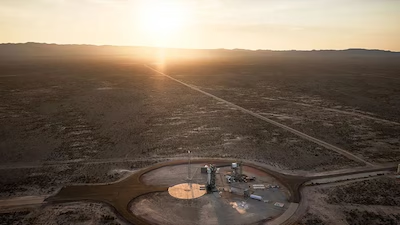Introduction: High Winds Stall Blue Origin’s Ambitious NS-33 Mission
Blue Origin, Jeff Bezos’ private space venture, has once again postponed its highly anticipated NS-33 suborbital launch due to adverse weather conditions. The launch, initially scheduled for June 21, 2025, at its Texas facility, faced repeated delays owing to high winds. This marks another reminder that even the most advanced space technologies remain at the mercy of nature.
NS-33: Blue Origin’s 13th Human Spaceflight Mission
The NS-33 mission holds immense significance for Blue Origin. As reported by Space.com, this flight will be the 33rd mission for the New Shepard system and the 13th human spaceflight for the company. Unlike many previous uncrewed research flights, NS-33 is designed to carry six civilian passengers into suborbital space, pushing the boundaries of commercial space tourism.
Meet the NS-33 Crew
- Allie and Carl Kuehner – Renowned for their work in conservation and exploration.
- Leland Larson – Philanthropist and passionate beekeeper.
- Freddie Rescigno, Jr. – Successful entrepreneur.
- Owolabi Salis – Author and attorney.
- Jim Sitkin – Retired lawyer with a love for space exploration.
These six civilians were ready to experience a few minutes of weightlessness and witness the awe-inspiring view of Earth from the edge of space before returning safely under parachutes, a hallmark of Blue Origin’s New Shepard rocket system.
The Impact of Weather on Suborbital Spaceflight
Despite technological sophistication, weather remains a critical factor for space launches. High-altitude winds pose significant risks during ascent and descent phases. Blue Origin’s team remains vigilant, continuously monitoring conditions to ensure passenger safety.
On June 21, strong winds forced Blue Origin to scrub the mission. A subsequent attempt on June 22 also faced cancellation due to sustained high winds. The company stated on social media that they are “assessing our next launch opportunity” but have not yet announced a new date.
Blue Origin’s Track Record in Commercial Spaceflight
Since its first human spaceflight in July 2021, which famously carried Jeff Bezos, Blue Origin has rapidly advanced its suborbital program. The reusable New Shepard system offers passengers 10 to 12 minutes of weightlessness, combining cutting-edge technology with commercial ambitions.
Earlier this year, Blue Origin made headlines with Katy Perry’s historic all-female space flight, further diversifying its passenger profiles and drawing global attention to the possibilities of space tourism.
Looking Ahead: The Future of NS-33 and Beyond
While the delay is undoubtedly frustrating for the crew and the company, safety remains paramount. Blue Origin’s ability to manage these challenges reflects the complexities of commercial spaceflight operations. The NS-33 mission, once launched, will mark a significant step forward, reinforcing the viability and safety of suborbital space tourism.
With increasing demand for commercial space experiences, companies like Blue Origin are setting new benchmarks in making space accessible to non-professional astronauts. The anticipation surrounding NS-33 only highlights the growing excitement in the field of commercial spaceflight.
Conclusion: The Sky Awaits

As Blue Origin continues to monitor weather conditions, the world watches with bated breath for the NS-33 launch. This mission encapsulates the fusion of human ambition, technological innovation, and the unpredictable forces of nature. Whether you’re a space enthusiast or a casual observer, the unfolding story of Blue Origin’s NS-33 crewed suborbital launch offers a captivating glimpse into the future of human space exploration.
For more updates on major space missions, visit our latest coverage on NASA’s Moon Mission Updates.










